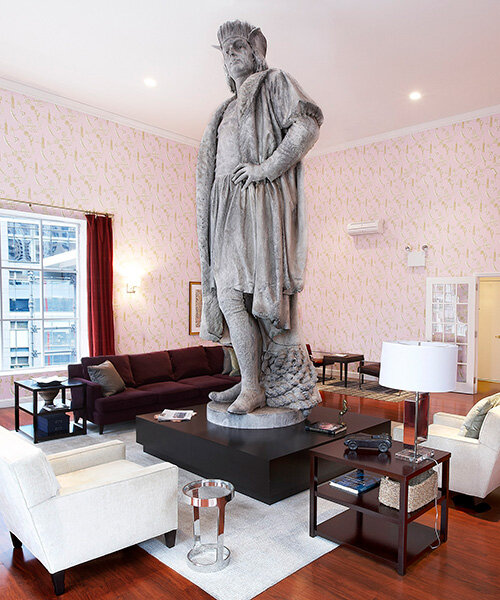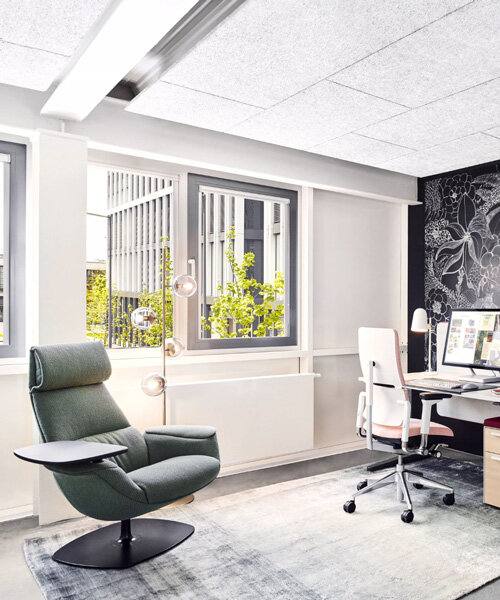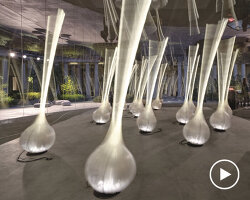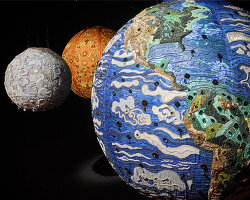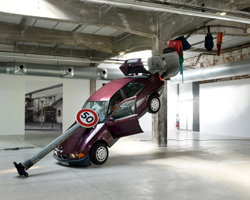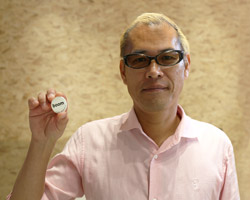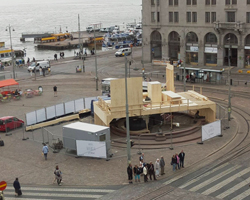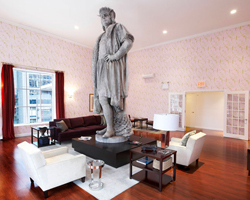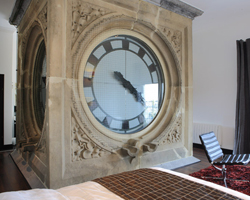with his unexpected and transformative public works around the globe that alter the experience of the familiar and routine, japanese artist tatzu nishi intends to amplify the power of imagination. drawn to art and architecture as a child, inclined to take a different path than others, and inspired by watching the world go by while traveling on a train, tatzu nishi came to art as ‘a vocation’. in 2012, the artist famously re-imagined the historic, 13-foot-tall statue of christopher columbus in new york — which rises to more than 75 feet atop a granite column — standing in a fully-furnished, modern living room. a journey up six flights of stairs on a carefully devised scaffold structure gave visitors access to a fictional living space, within which the marble columbus imposingly stood. the artist later transformed the japanese city of beppu with a friendly faced tower and unexpected treatments of familiar architecture and urban elements. more recently, he invited visitors to paris’ palais de tokyo art museum to step inside a cross-section of a life-size, three-storey doll house.
the artist is driven to create work that induces a sense of fascination and free thought. ‘enriching the imagination of an individual leads to the expansion of the imagination of humankind,’ tatzu nishi tells designboom in an interview. ‘art plays an important role so that we do not misunderstand the direction that humankind is aiming for. with that in mind, art must be as wide and fair as water and air. it is the right to live, like education.’
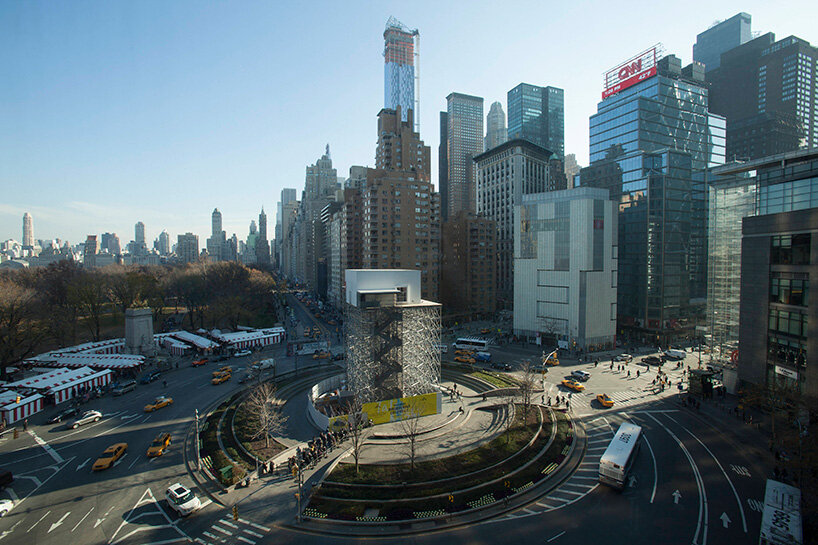
tatzu nishi: discovering columbus | image by tom powel imaging
september 20 – november 18, 2012 in columbus circle, new york city/USA | presented by public art fund
‘for me — someone who defines the reason for the existence of art as the ‘expansion of imagination’ — I don’t want to disturb the free imagination of the audience,’ tatzu nishi says about viewers’ engagement with his work. ‘even if my work has some thoughts in it, I don’t force you to understand them. I hope the viewer feels something freely.’
designboom spoke with the artist about drawing as a child, his love and fascination with train travel, and not riding on the rails laid out by others.
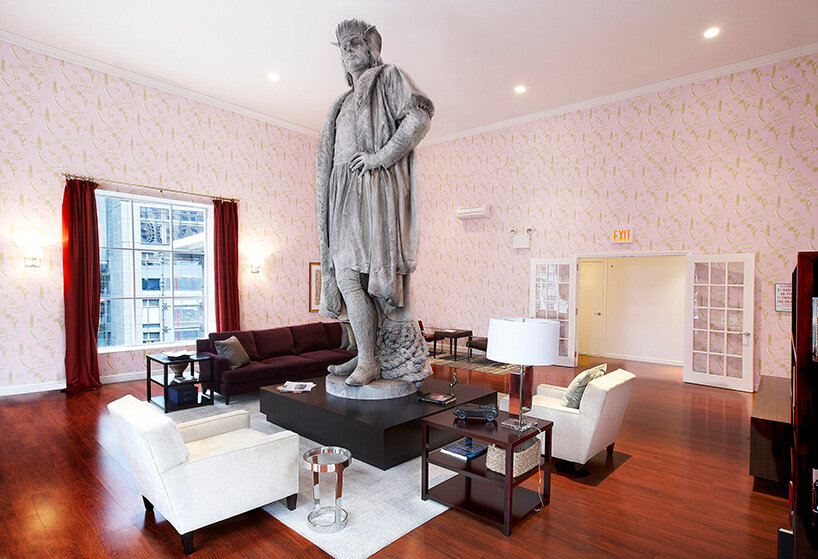
inside tatzu nishi: discovering columbus | image by go sugimoto
DB: what aspects of your background and upbringing have shaped your creative principles and philosophies?
tatzu nishi (TN): I wasn’t raised in a particularly art-related family. at the request of my parents, I attended several lessons, but I became absorbed in drawing. I think I was around 4 years old. when I was around 11 years old, I became interested in architecture. my parents built a house, so architects came to visit from time to time. I used to draw blueprints for my own house, and I built a tree house in the woods with my friends. as I write this, I can say that my interests haven’t changed at all since I was a kid (laughs). I went to school seriously and took classes seriously, but the school saw me as a problem child. I didn’t like to behave like other students, and I couldn’t help it. when everyone turned to the right, I turned to the left. rather than being rebellious, I wondered why I had to do the same things as other people. I also loved getting lost for similar reasons. even if you know that you can easily reach your destination by walking a path, you’ll be attracted to taking a detour in a different direction on purpose. doesn’t this kind of personality of mine — one who has doubts about common sense, and doesn’t want to ride on the rails laid by others — work very effectively in activities in the art world, where imitation doesn’t make sense?
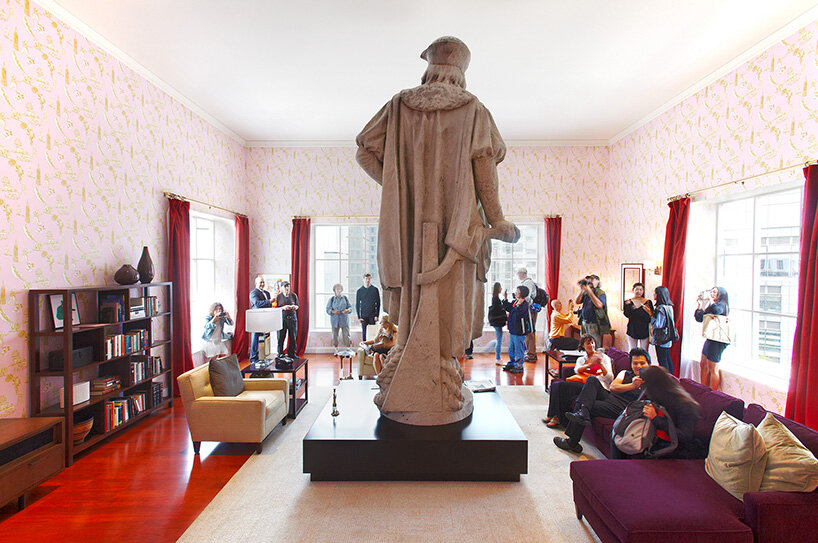
inside tatzu nishi: discovering columbus | image by tom powel imaging
DB: at what point did you decide to become an artist? why?
TN: I might say that I aimed to become an artist when I entered painting class. the answer to ‘why did you decide to become an artist?’ is simple — I have had no interest in anything other than art since I was a child, and I wouldn’t be able to go any other way. being an artist is a vocation.
DB: where do you work on your projects? what is the best moment of the day at your studio?
TN: I think artists are people who work 24 hours a day, rather than sitting at their desks and working at fixed times such as 9-5. as this intensive work continues, I may be searching for a solution in my dreams. with that in mind, my workplace is wherever I am. I’ve been an artist for 24 years, but I didn’t have a studio until last year. I used to do all my work with a single macbook, so I always carried it around and said, ‘the world is my studio’, at the time. I didn’t have to complete my work elsewhere before an exhibition, as all my work is done at the venue when the exhibition opens. last year, I had an exhibition at a gallery for the first time in 10 years, so I had a studio for the first time for its production. some of the works had to be completed elsewhere before the exhibition, given the short installation period in the gallery. after the exhibition, I continued to rent the studio, and now I am working on projects that can be produced indoors.
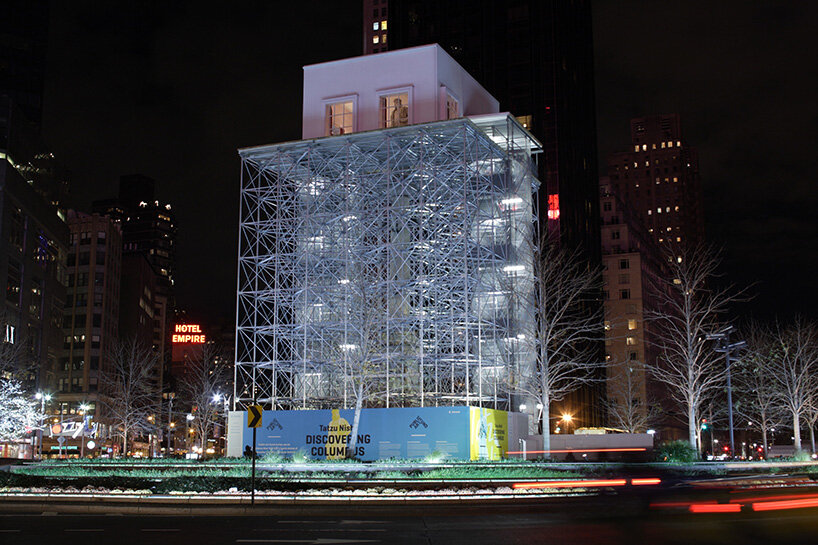
tatzu nishi: discovering columbus | image by go sugimoto
TN (continued): the place where I get ideas from is on the move, most often on the train. perhaps more than 80% of my ideas have come on the train. since I was a kid, I’ve loved getting on a train and seeing the scenery passing by through the window. that habit hasn’t changed at all, even now as an adult. even when the train is free, I stand beside the door and look at the various buildings that run past, nature, people who look small in the scenery, people on the platform, and a glimpse of everyday life. my imagination grows vaguely about everything. time spent traveling, which seems to be totally wasted, can be said to be very fun, valuable and important to my life.
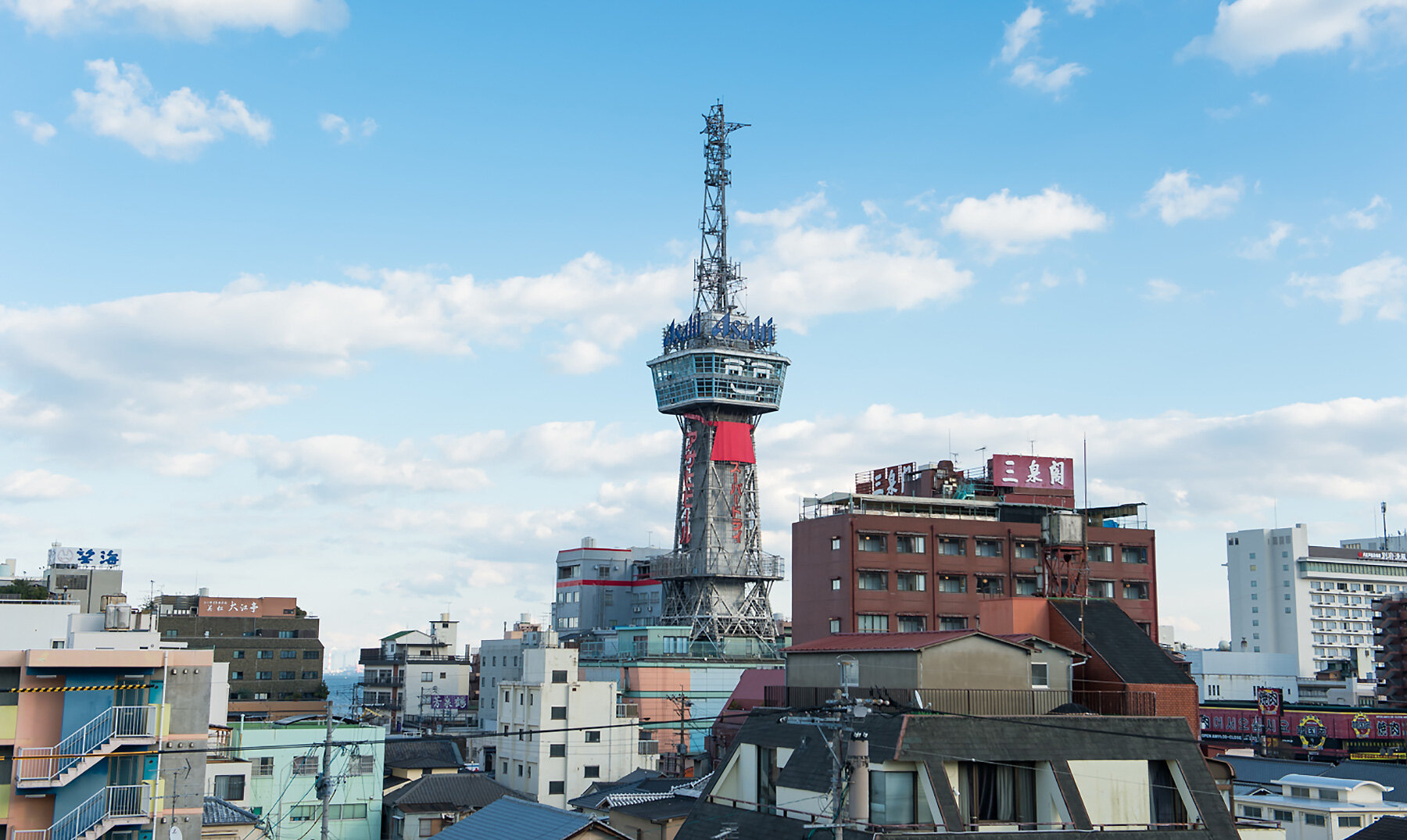
beppu tower jizo | tatzu nishi in beppu: october 28 – december 24, 2017, beppu/japan | presented by beppu project
TN: the answer is likely to be long.
when I was a college student in germany, I started to present my work outdoors to an audience of ordinary people who are not usually interested in art. before that, I started showing my work in museums and galleries, but I was bored that the value of my work was determined only by the narrow art world. I think the situation is different in art museums and galleries — such as new york, where many tourists come. but other than those places, people who come to see contemporary art are limited to art museum officials, collectors, critics, art college students and other art-related people. it’s easy to think that culture is important for those who can afford food, clothing and shelter. is culture necessary for those who can not?
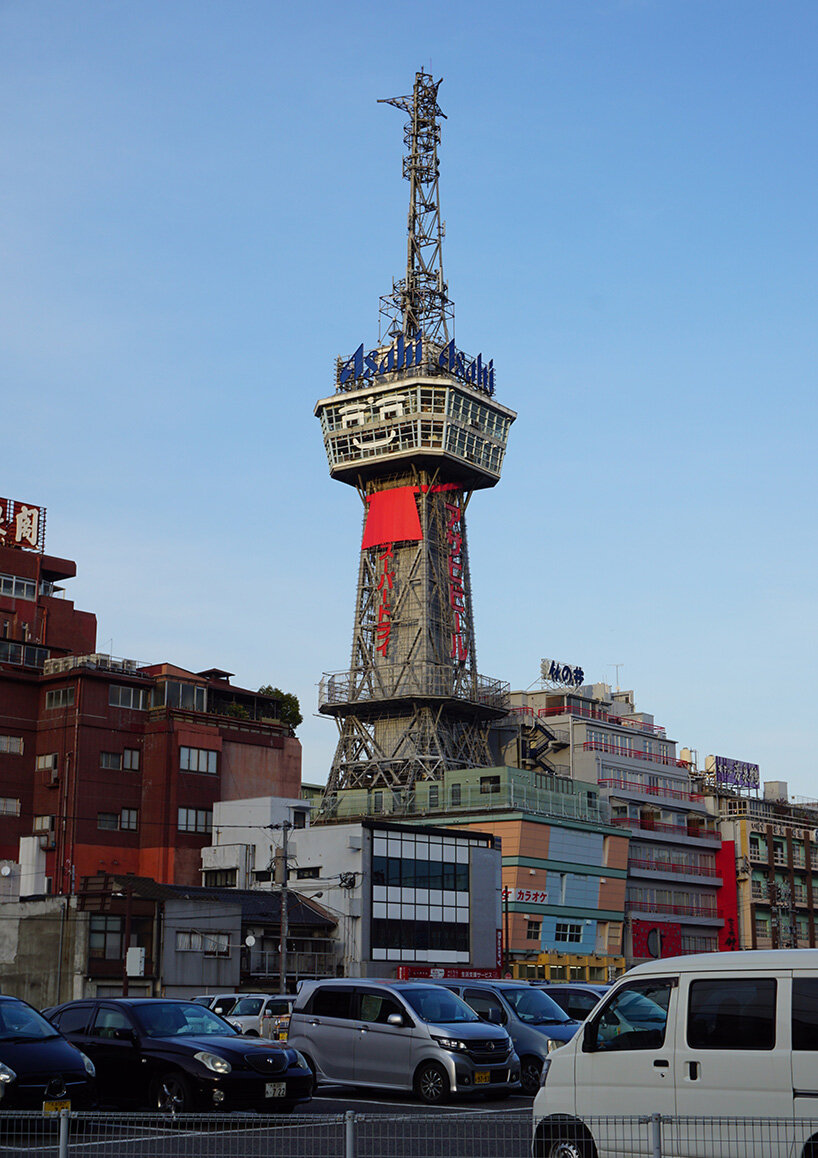
beppu tower jizo | tatzu nishi in beppu: october 28 – december 24, 2017, beppu/japan | presented by beppu project
TN (continued): I believe that the reason for the existence of art for humankind is the expansion of human imagination. having more imagination will also give you the ability to look ahead and avoid danger, reducing the chance of mistaking your future direction. think of yourself — when you think about your future, at the crossroads of your life, you should make the most of your imagination and look for a better direction. reading books and listening to others is of course important, but in the end you rely solely on your imagination to determine your life. enriching the imagination of an individual leads to the expansion of the imagination of humankind. art plays an important role so that we do not misunderstand the direction that humankind is aiming for. with that in mind, art must be as wide and fair as water and air. it is the right to live, like education.
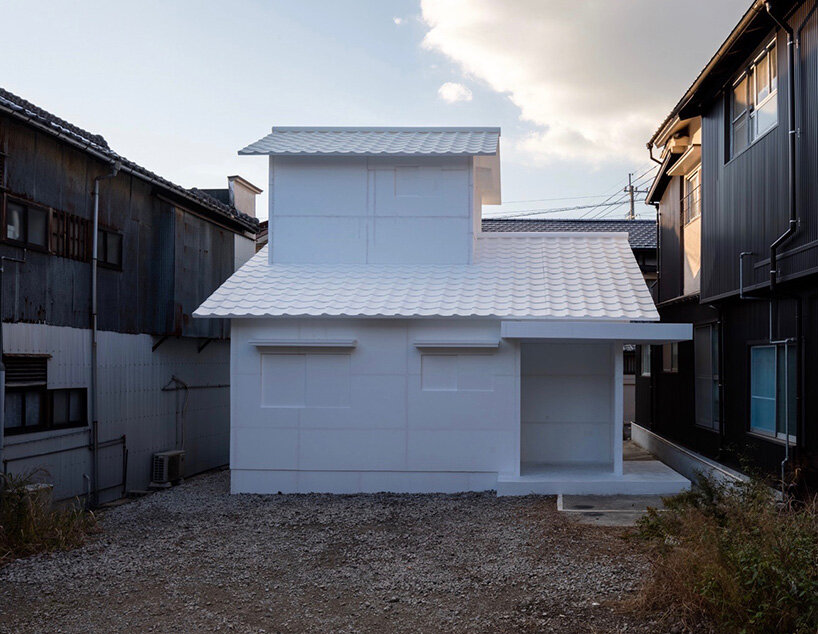
only good memories remain after all | image by nobumitsu wakiya
tatzu nishi in beppu | october 28 – december 24, 2017, beppu/japan | presented by beppu project
TN (continued): having come up with this idea, I began to show my work outdoors, assuming that all people were spectators. from the time I entered japanese art university, I had it as a proposition that I had to solve, ‘why does a person want to show work to others after making it?’ basically, why do artists exist? if you just want to make it out of your own interest, you shouldn’t have to show it to anyone. I like to make works, but why is there a desire to display the finished product? I’ve been looking for the answer for a long time, but the answer I came up with was the one I said earlier. isn’t it the reason why artists don’t stop producing even if they don’t sell or are poor? isn’t it because they unknowingly feel that they are contributing to humanity just by living? it says ‘accepted by the general public’, but art does not have to be ‘accepted’ at all. having a strong dislike of the work has already stimulated a person’s imagination. the most meaningless works of art are those that do not generate impressions and those that are passed through.

only good memories remain after all | image by tetsuya yashiro
tatzu nishi in beppu | october 28 – december 24, 2017, beppu/japan | presented by beppu project
DB: you have developed projects all over the world — which city that you have created work in has made the biggest impression on you? why?
TN: new york and shenzhen are very lively and I love them, but when asked what are my favorite places in the world, I say medellin, the second largest city in colombia. this city in south america had the worst homicide rate in the 1990s due to a conflict with the world’s largest drug organization, the medellin cartel. as a result, deteriorating security and poverty were widespread in the wake of almost destroying the drug organizations. in 2013, it was transformed into a smart city at such a rapid pace that it was selected as the ‘innovative city of the year’.
I visited this city for an exhibition in 2007. in an attempt to revitalize the town culture, I was planning and implementing a free classical concert in a public park, setting up a public artwork, and an exhibition of contemporary art that I was invited to do. after that, a huge library was built in the area where the poor lived — and of course that wasn’t the only reason — but it was a city that believed in the power of culture and has been brilliantly regenerated.
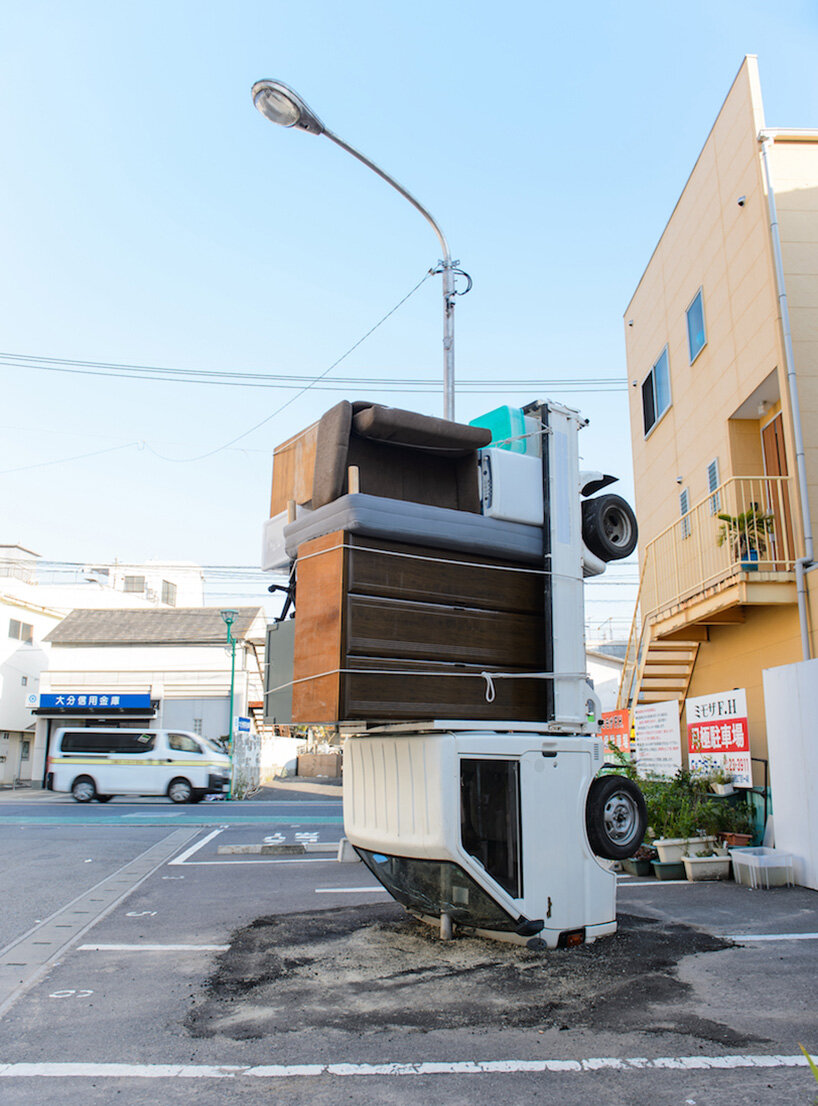
can we be released from beppu’s fascination? | image by nobuhiro wakiya
tatzu nishi in beppu | october 28 – december 24, 2017, beppu/japan | presented by beppu project
DB: your work often creates unusual encounters and surprising experiences — what do you hope audiences feel? what do you hope your work creates a discussion about?
TN: I don’t explain to the audience how I want them to feel with my work. for me — someone who defines the reason for the existence of art as ‘expansion of imagination’ — I don’t want to disturb the free imagination of the audience. even if my work has some thoughts in it, I don’t force you to understand them. I hope the viewer feels something freely. I can’t think of anything other than ‘what is art’ as the desired theme to create discussion in my work. I’m not creating a work of art to criticize, or criticize something. even if picasso portrays guernica in an attempt to express the misery of war, what should be criticized is what new adventures are being made as a work of art. a superficial understanding, such as ‘the misery of war strikes my heart,’ can only equalize the imagination. in that sense, I consider guernica to be the farthest piece of picasso’s work from art.
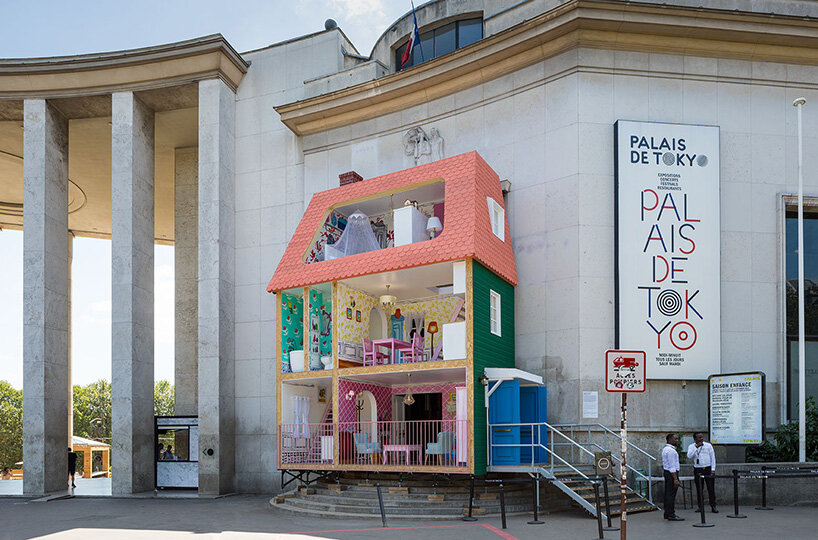
a doll’s house | image by tadzio
in the exhibition ‘encore un jour rêvé pour le poisson banana’| june 21 – september 9, 2018 at palais de tokyo, paris
DB: which project or period of your career have you enjoyed the most so far?
TN: if you consider that ‘enjoying’ includes the ‘pain’ to reach it, you can say that the project that was difficult, but had a big harvest was ‘enjoyed’. in one city, ‘obdach’ in cologne, germany in 1997, which first realized the idea of building a room around a statue, and ‘discovering columbus’ in new york, 2011, which took three years to realize. another example is the 2017 solo exhibition ‘tatzu nishi in beppu’ in japan, in which I showed four huge outdoor works and one indoor exhibition at the same time.
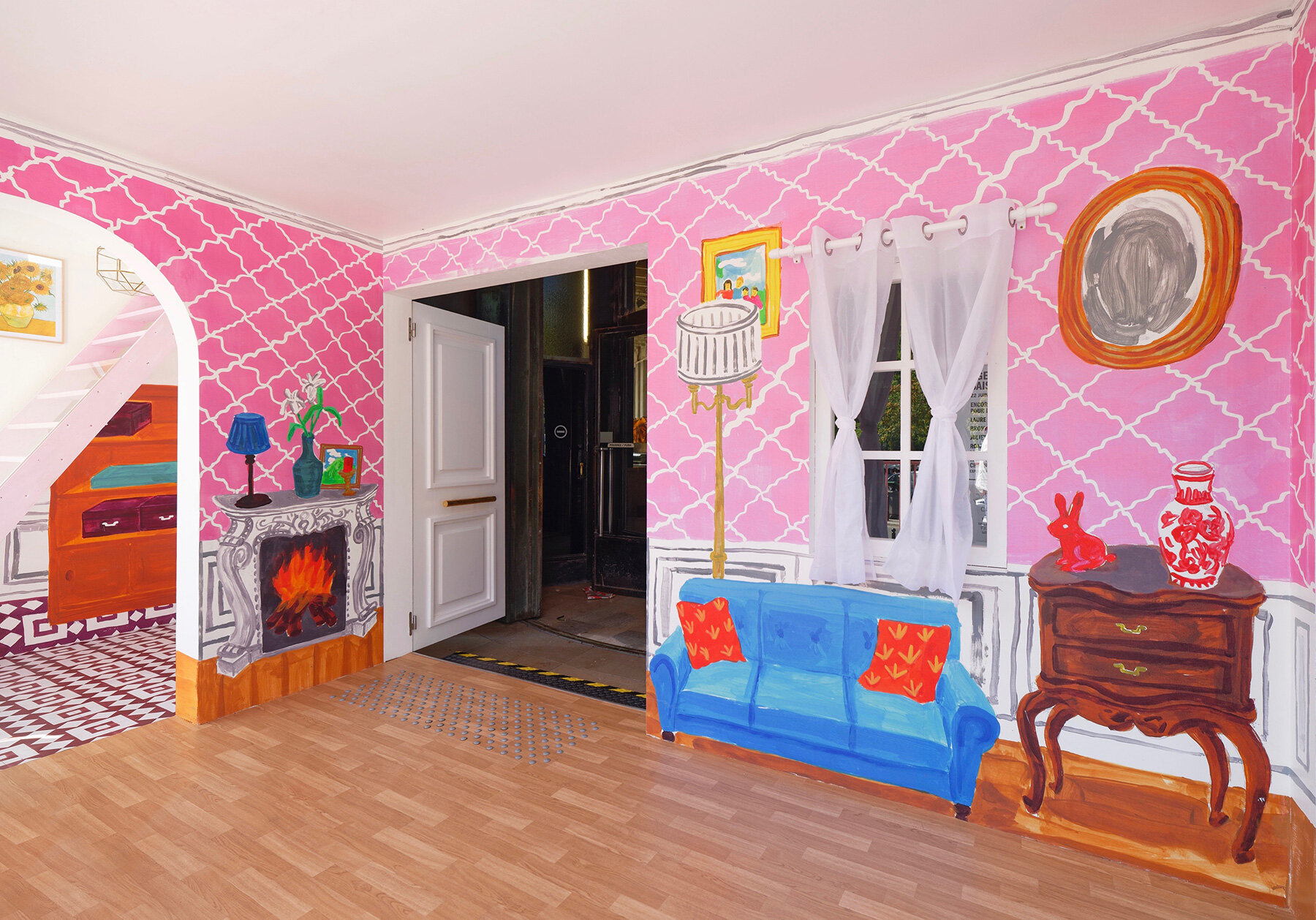
inside a doll’s house | image by aurélien mole
TN: I majored in painting at an art university in japan, but when I entered an art university in germany, I abandoned painting in an attempt to try a completely different method of expression. I thought I already understood two-dimensional work. I hadn’t painted since then. I always answered in interviews that I would work on painting again when I had time, but suddenly that time came as a result of the coronavirus. this is because exhibitions continue to be canceled or postponed.
since I started working as an artist in 1997, I’ve been presenting huge works almost exclusively outdoors. I now have my first studio in a tourist spot about an hour by train from tokyo, and I have been away for a long time because it’s the opposite production place, indoors, and the opposite production method, a canvas. I’m working on a painting. it’s been over a year since I sat in front of the canvas, but it seems that the feeling of painting has finally returned. I take this opportunity to explore what I can do with the old-fashioned expression of painting. I am very fascinated by it now.
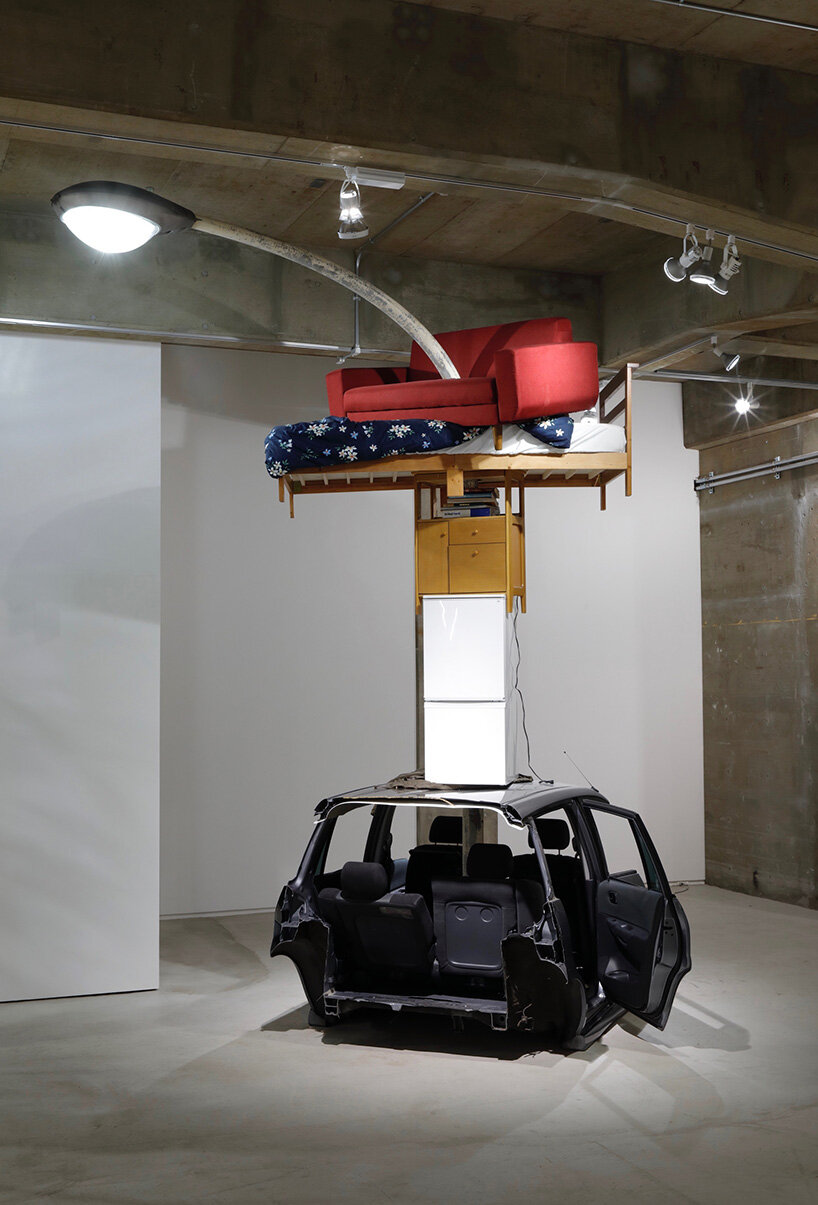
the real reasons for unbreakable habits and how to deal with them | image by keizo kioku
the real reasons for unbreakable habits and how to deal with them
january 25 – february 22, 2020 at ANOMALY, tokyo, japan

tatzu butzu – the buddha is alive (3 bodies) | image by keizo kioku
the real reasons for unbreakable habits and how to deal with them
january 25 – february 22, 2020 at ANOMALY, tokyo, japan
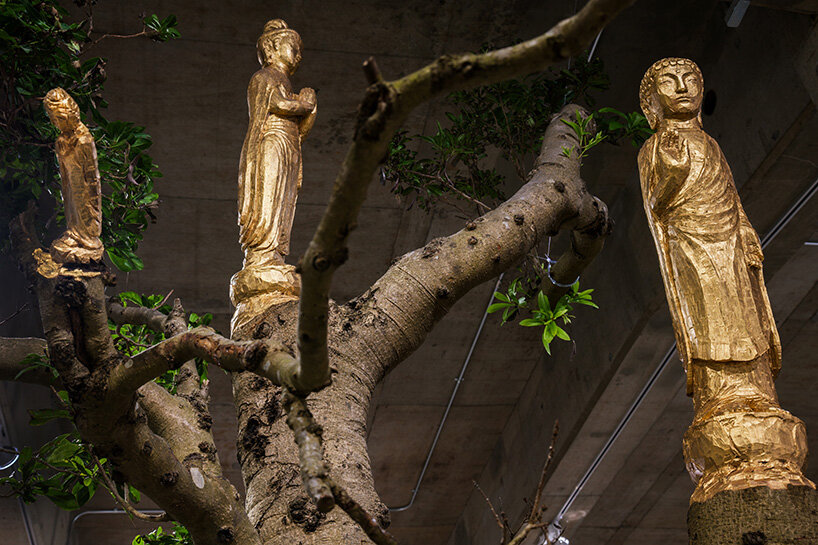
tatzu butzu – the buddha is alive (3 bodies) | image by shingo kanagawa
